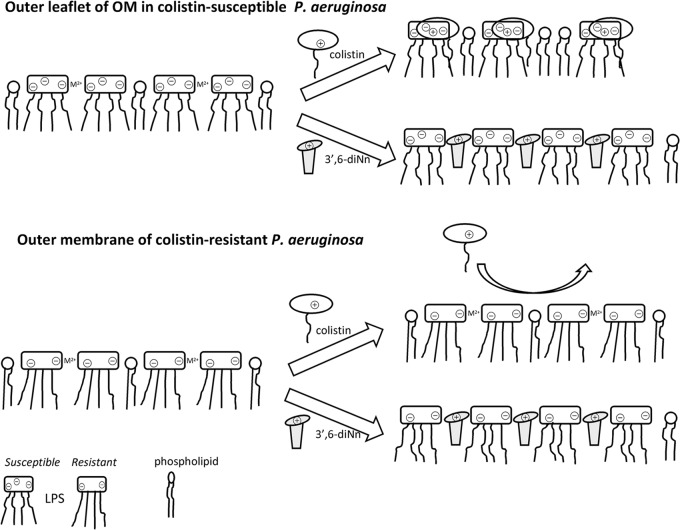FIG 9.
Hypothesized mechanism of action of 3′,6-diNn against colistin-susceptible (top) and colistin-resistant (bottom) P. aeruginosa strains. (Top) The LPS layer was stabilized by cross-bridging through metal divalent cations (M2+). Insertion of colistin and 3′,6-diNn induces the formation of bimolecular complexes with LPS and disrupts the LPS cross-bridging. (Bottom) The highly ordered LPS layer acts as a barrier to colistin (no insertion), while the flexibility of 3′,6-diNn and its ability to fluidify the LPS network always permit primary interactions with self-promoted insertion.

